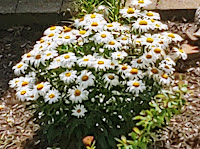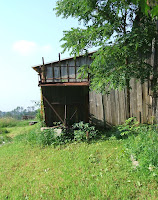“Hot July brings cooling showers, apricots and gillyflowers.” - Sara Coleridge
I admit as a writer I enjoy time alone to sit and think which is why I like July, why I like summer. My patio swing calls me to rest, enjoy the warm days or balmy nights, and ponder the world. It’s said curiosity is instrumental in driving our thought processes. It’s when I’m wrapped in that solitude when I ask questions which may or may not have answers:- Why can’t we see the wind?
- How does the song sparrow learn its many different songs?
- Do woodpeckers get headaches?
- What do northern squirrels think when they eat their first southern peanut from my bird feeder? Can they have an allergy to them?
- Fireflies flash in patterns that are unique to each species. Have they ever learned another pattern like we learn second languages?
- Why was the daisy chosen to be the flower plucked with the chant: He loves me, he loves me not?
And my weird wondering brain chugs along…
Maybe in our attempt to explain things in nature, we need to accept there are mysteries which may never have explanations. As humans, we like explanations. We like plans. We like the predictable.And, we like to ponder.
After all, isn’t that what
creativity really is? The use of our imaginations or original ideas in the
production of an artistic work?
So I leave you with this July
wish: Take time to rest, relax, and contemplate the world around you. And if
you get a bizarre or curious thought, drop it in the comment box below so we
all can ponder the answer!
Visit my AMAZON AUTHOR PAGE to see all my books.












